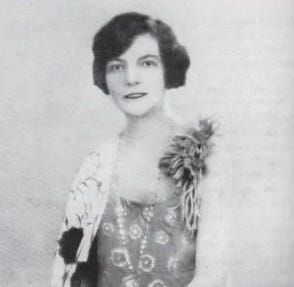British Gangs: Kate Meyrick
My first in a series of historical crime stories from 1920s Britain
Nightclub owner Kate Meyrick was a successful businesswoman in London’s Soho of the 1920s. She is not well-remembered now, but once you know her name, you can find hidden corners of the internet where she lives on. She ran a wildly successful nightclub, called simply The 43, at 43 Gerrard Street. It was one of the top clubs in London, and attracted stars such as Joseph Conrad, J. B. Priestley, Tallulah Bankhead and Frederick Lonsdale, a successful playwright, and Michael Arlen, a famous novelist of the time. I was thrilled to read about Kate Meyrick and I knew she had to feature in my first book, British Gangs, which is coming out in September, and includes more about Kate Meyrick’s life. During the summer I will write more on some of my favourite characters from the book, and I’m thrilled to be starting with Kate.
Kate Meyrick began life as Kate Nason in Kingstown, now Dún Laoghaire, in Ireland. She dreamed of becoming a doctor, an aspiration that changed through circumstance, but she did marry a doctor, Ferdinand Meyrick, whose growing medical reputation took them to London. They had eight children together but the relationship was under strain. They separated towards the end of the Great War, a circumstance which indirectly propelled Kate into her life as a nightclub queen.
Kate had some theoretical inheritance money to help her survive as a single mother, but for various unclear reasons she had trouble accessing it. However when an opportunity came up to buy into a tearoom, she seized her chance. At the time she was nursing one of her daughters through a serious case of flu, and some security would have been welcome. She picked up the business and entertainment skills she would need to steer her nightclub empire later on, and she discovered perhaps her most important business lesson. In her own words, 'Men will pay anything to be amused.'
Nightclubs of the time always teetered on the edge of the law. These were night-time venues, set up for late parties that lasted beyond midnight and frequently until the following morning’s breakfast, yet alcohol had to be locked away at ten o’clock. The only way to make a profit was to ignore this strict licensing law. The police would mainly turn a blind eye, but they could be mercurial in their enforcement and how they chose venues to raid.
Yet the police would not be very helpful when it came to protecting customers and staff from those who had indulged themselves with too much drink. The club owners needed the imposing physical presence of door staff and security guards. They would turn to some of the gangsters who also visited the clubs to drink. And they did need protecting. One night Kate was sitting alone in the office at The 43 when a man pointed a revolver at her and demanded money. The man was smiling and spoke politely, and Kate did not realise the gun was real. She smiled back at him and pushed the muzzle towards the ceiling, causing the gun to discharge. The man ran off as staff rushed in to check that Kate was okay. He had already held them up to gain entry to the club, and they were likely on the way to help even before the noise of the gunshot.
Some of the police officers could be bought: Kate was convicted of paying a police officer to inform her when a raid was due on one of her clubs. The penalties were draconian: breaching the license would often require a club to be closed down, although they were allowed to reopen under a new name. The government decided on a crackdown, and Kate was sent to prison several times.
Kate’s own account of her spells in prison is compelling reading. The conditions were appalling, especially in Holloway Prison, where the food was always terrible. Even the bread was bad: it was either raw dough or as hard as granite. Kate was sent to prison five times, for a total of just over three years. The harsh conditions affected her health, and she died, aged just 57, in January 1933.
Much of the information I found about Kate Meyrick came from her own book, Secrets of the 43, published in 1933. Kate sadly died shortly before the book was published, but it remains a readable and fascinating account of her times. Her name is not famous now, but Evelyn Waugh based his character of Ma Mayfield in Brideshead Revisited on Kate. She was often known as Ma Mayrick, which underlines the maternal role she played in London’s nightlife. In 2022, the National Archive had a 1920s exhibition that featured Kate, and you can read more here.
You can pre-order my book on British Gangs from any of the main bookshops for delivery in September 2024, but I particularly like to use Blackwell’s as they offer totally free postage. You can find my book here.


